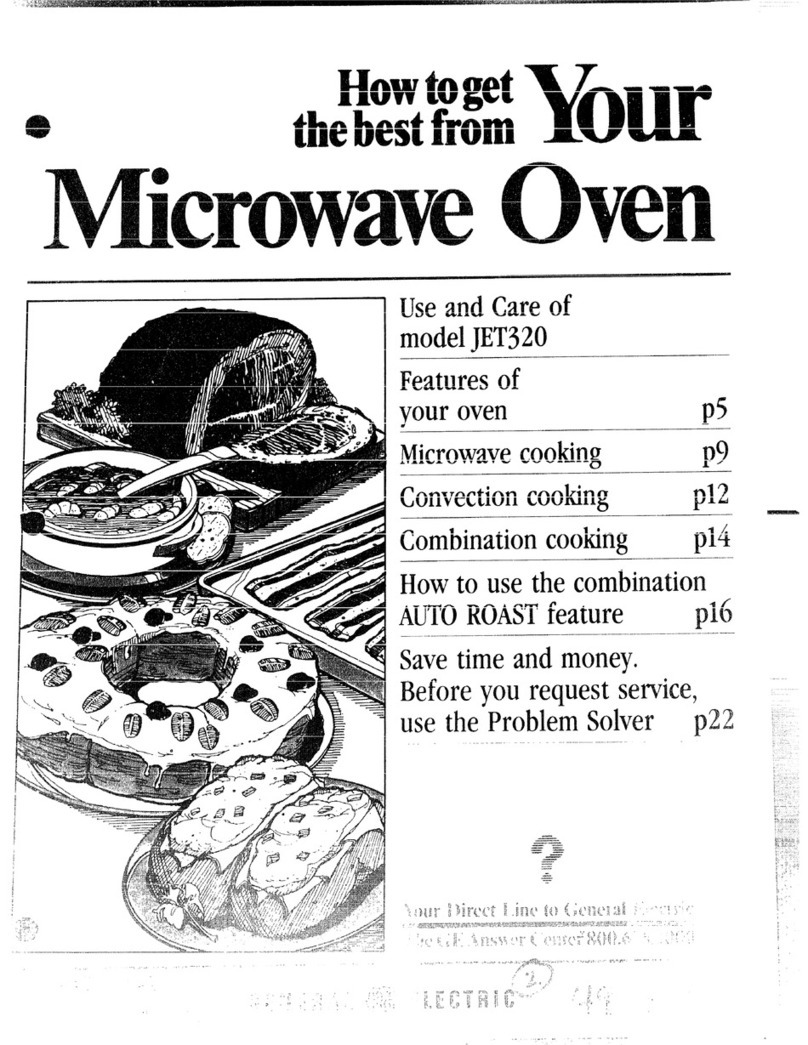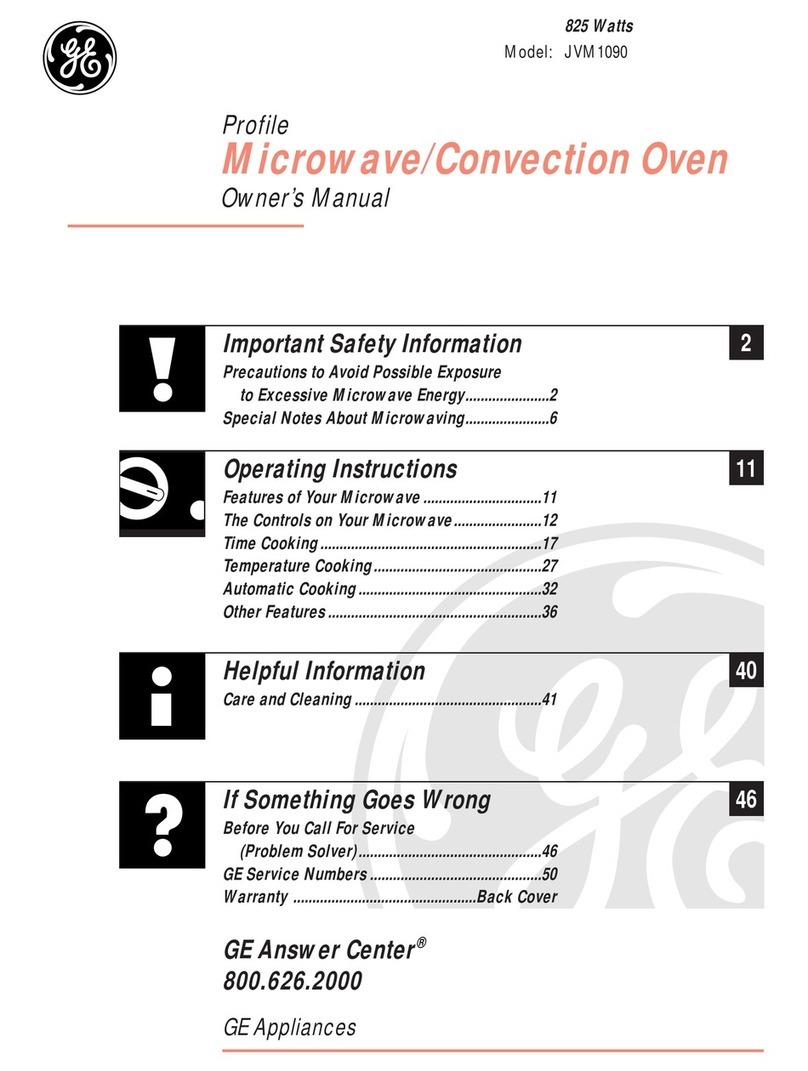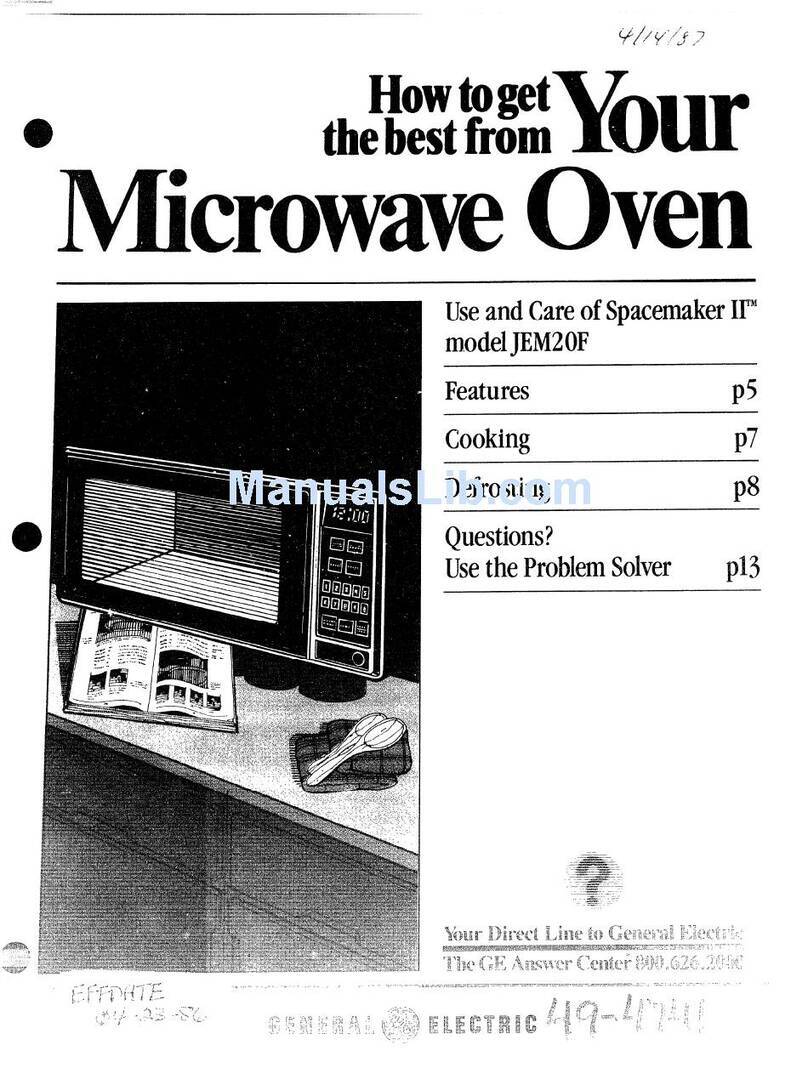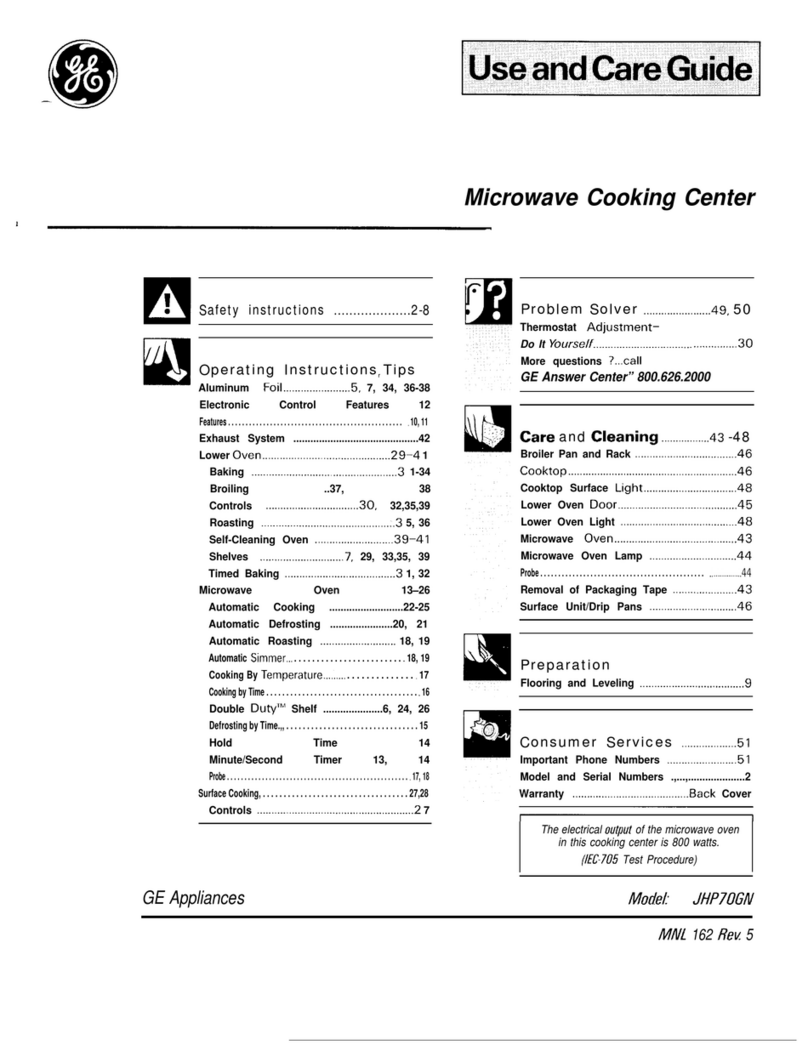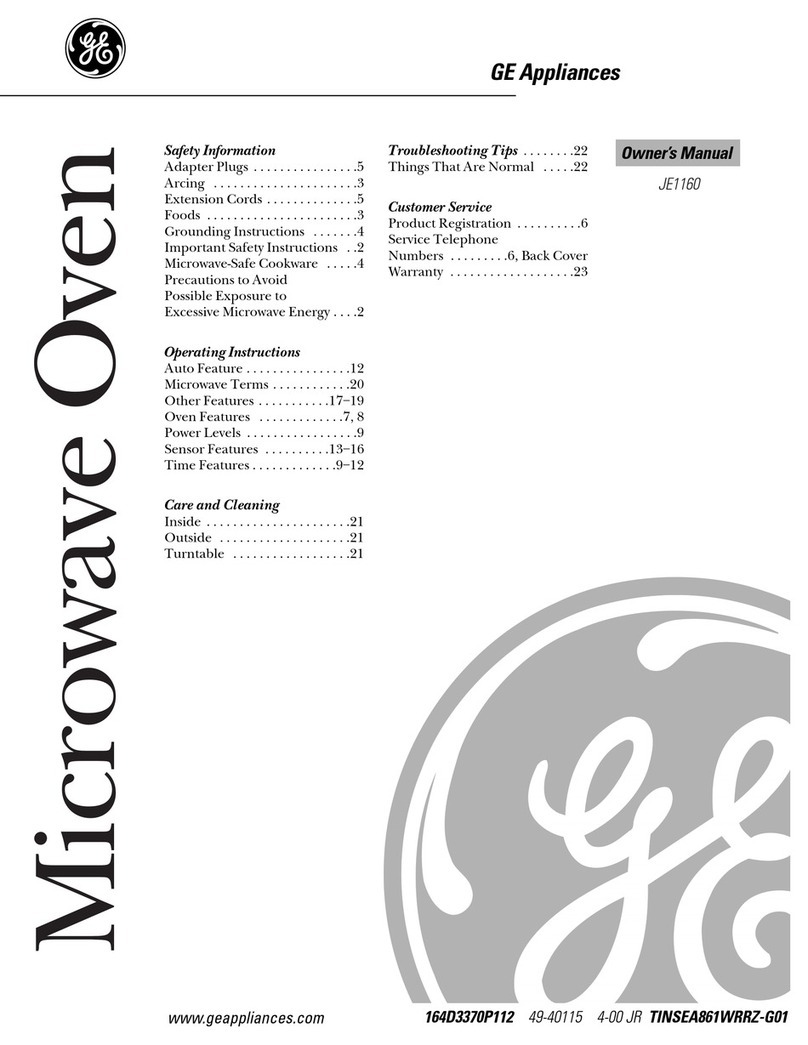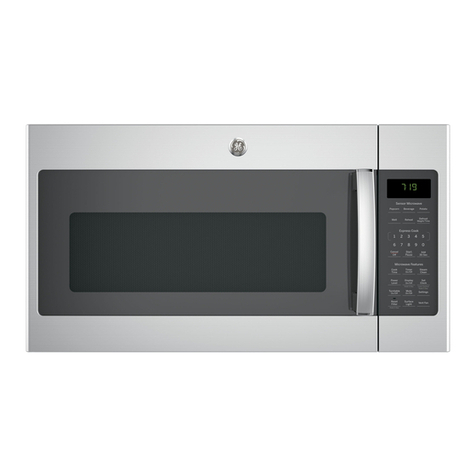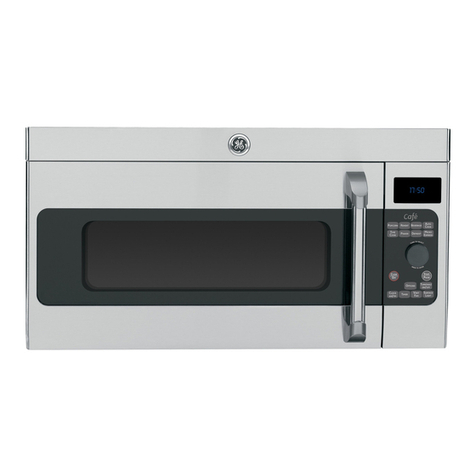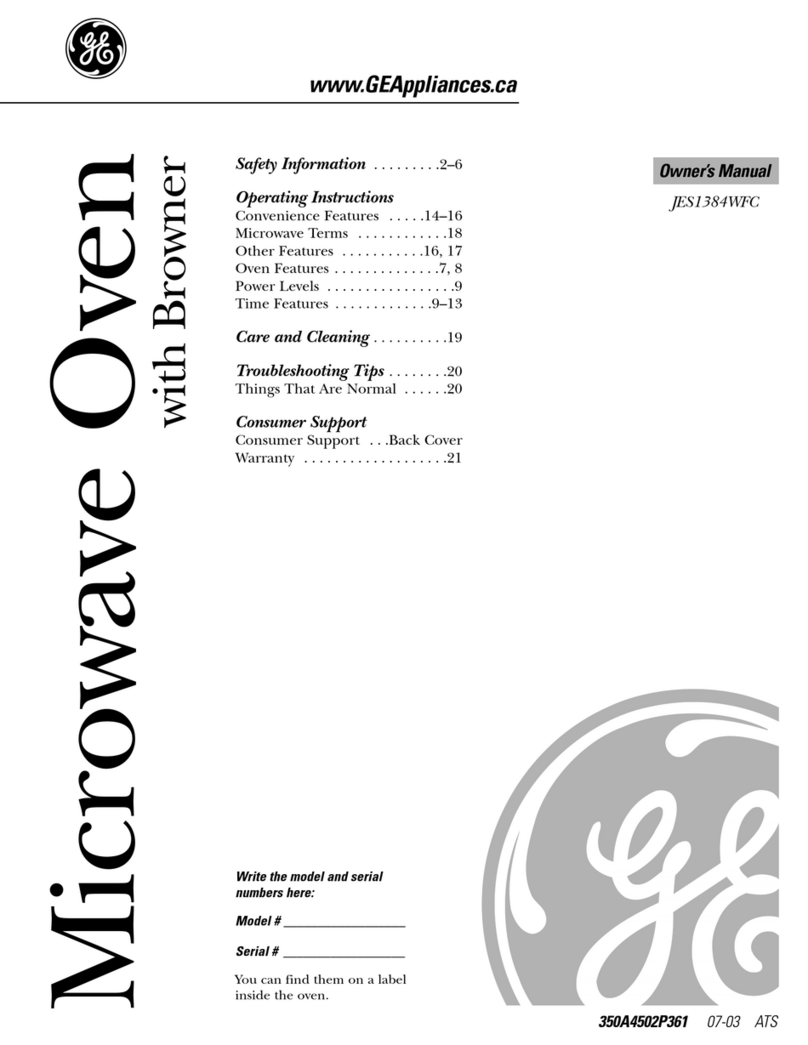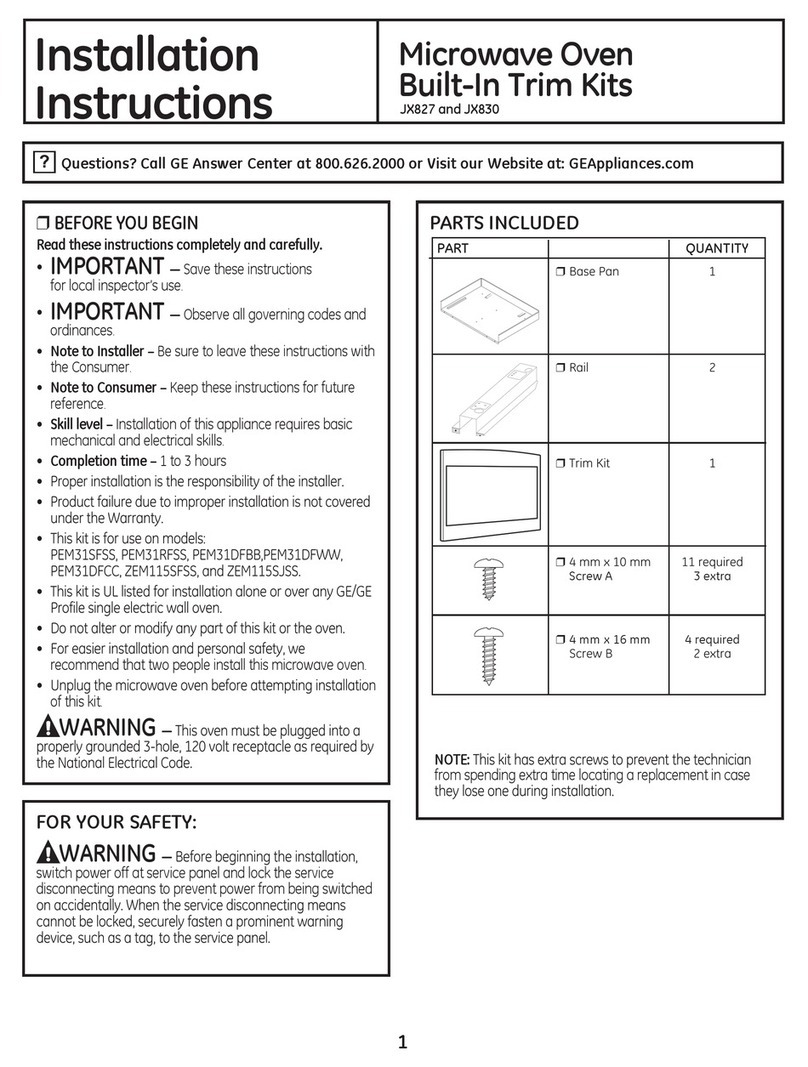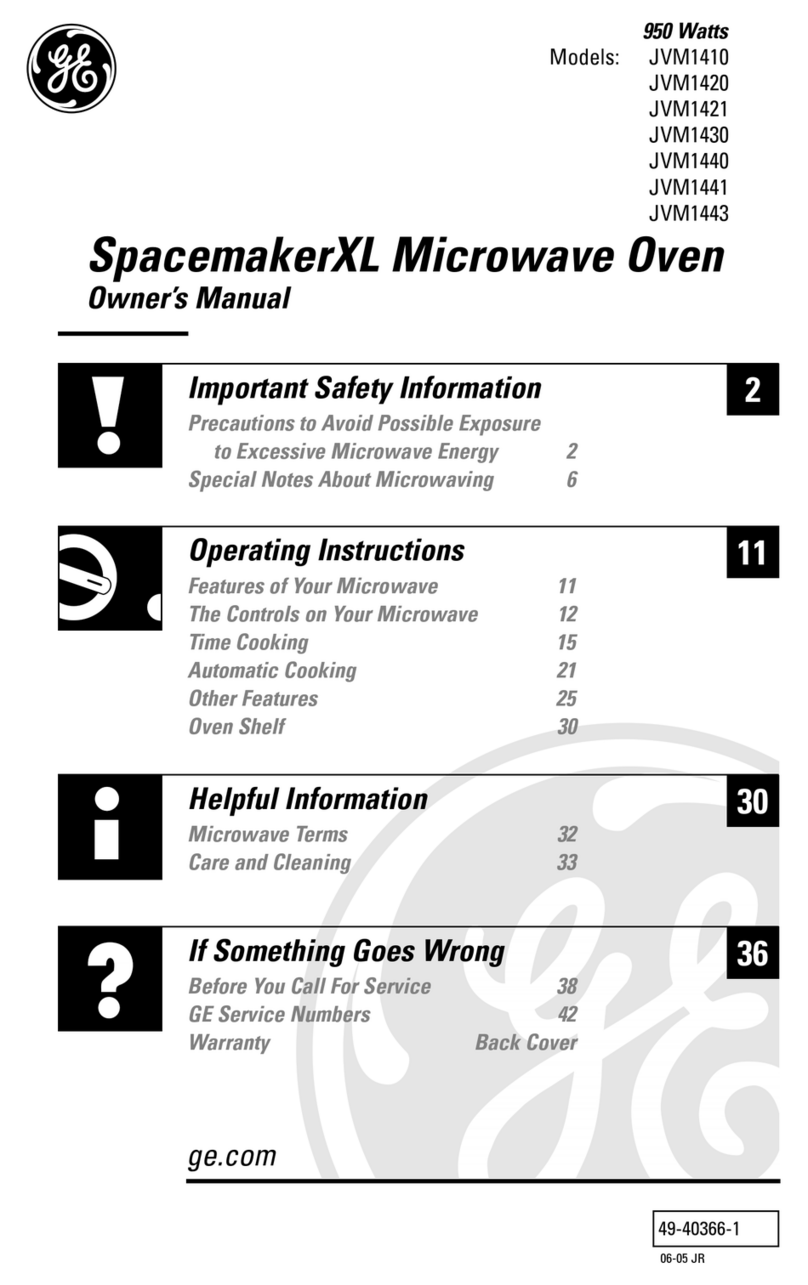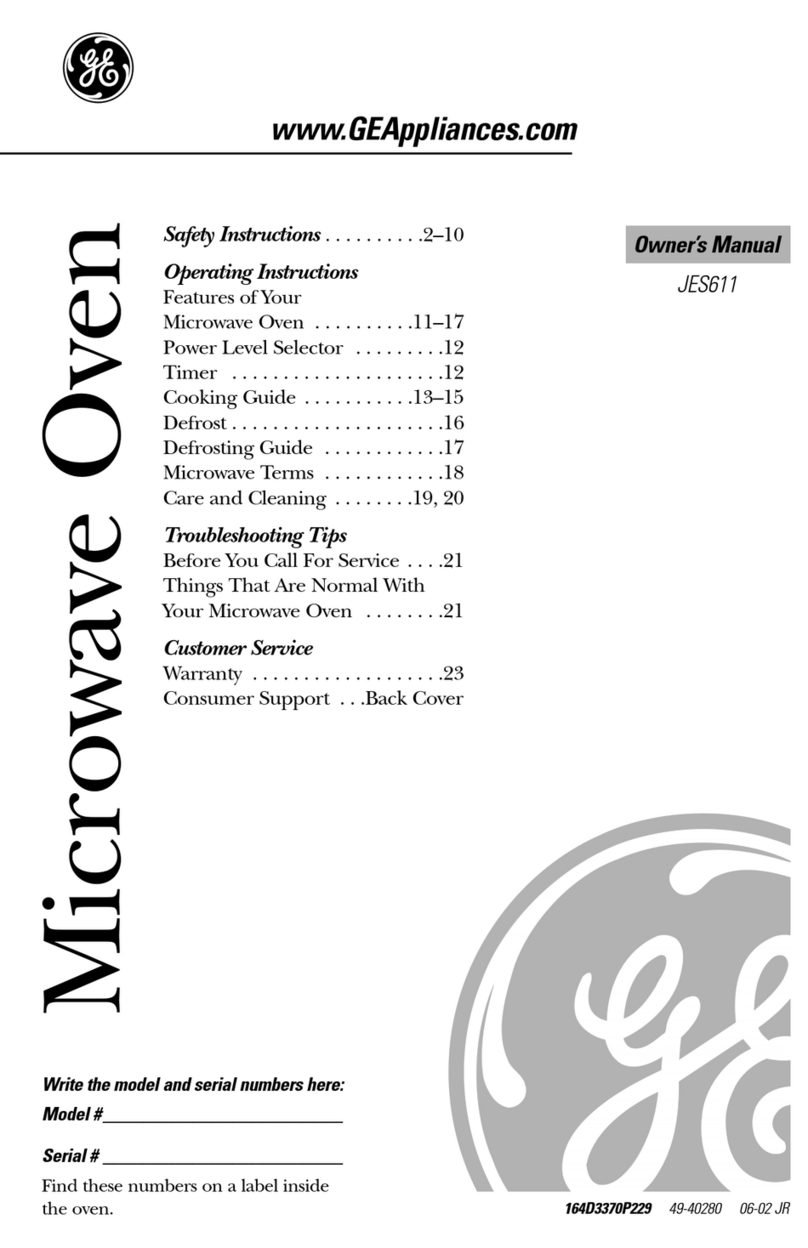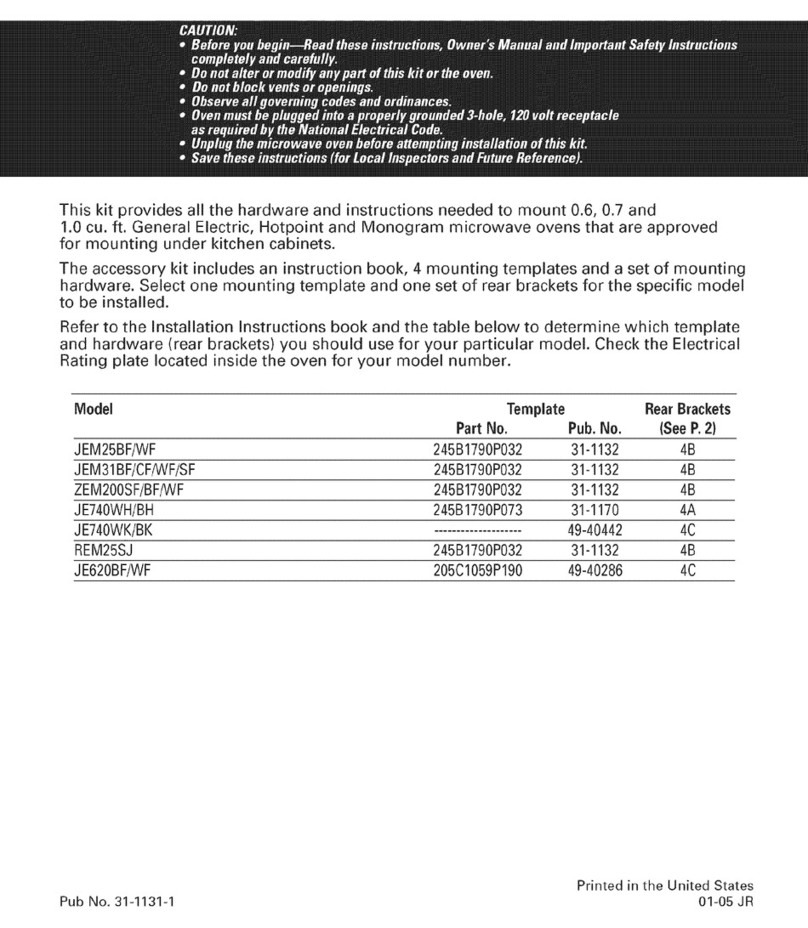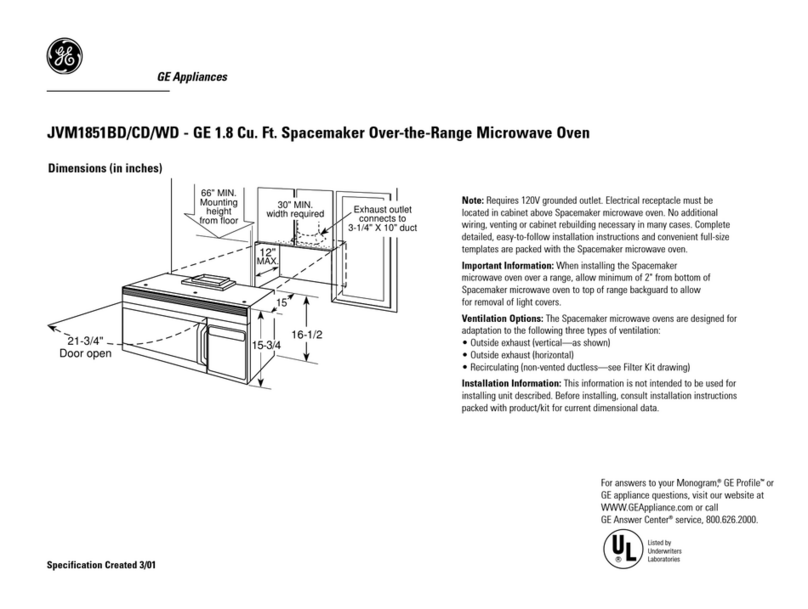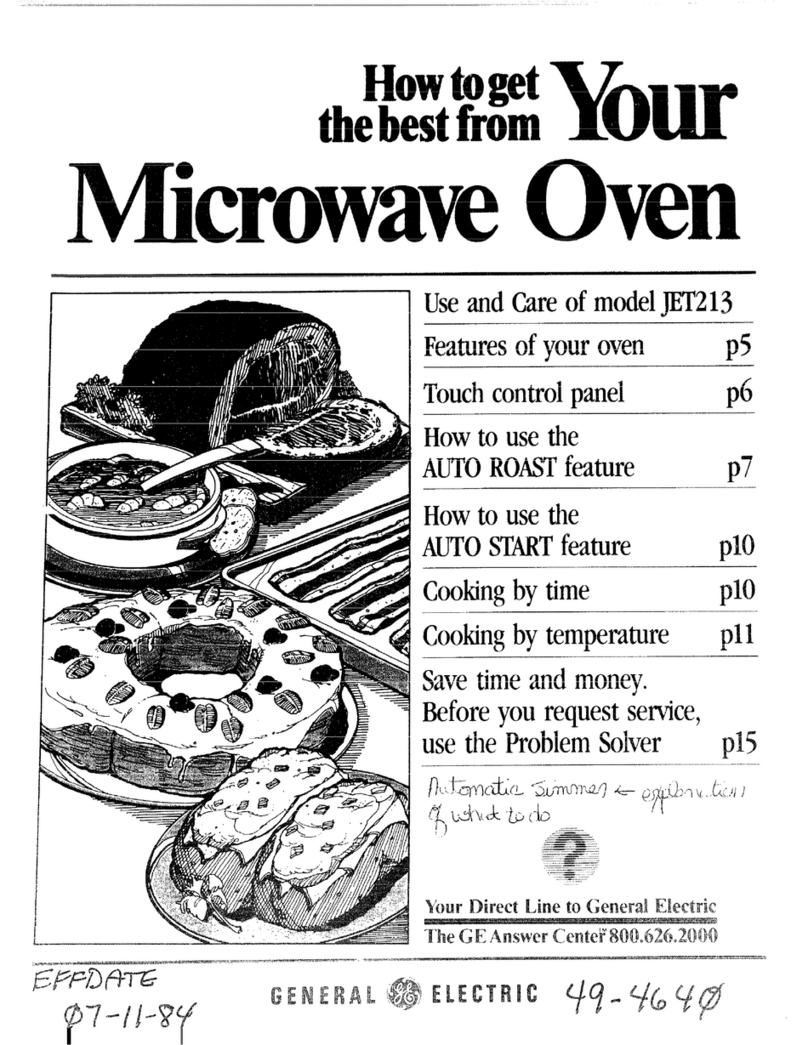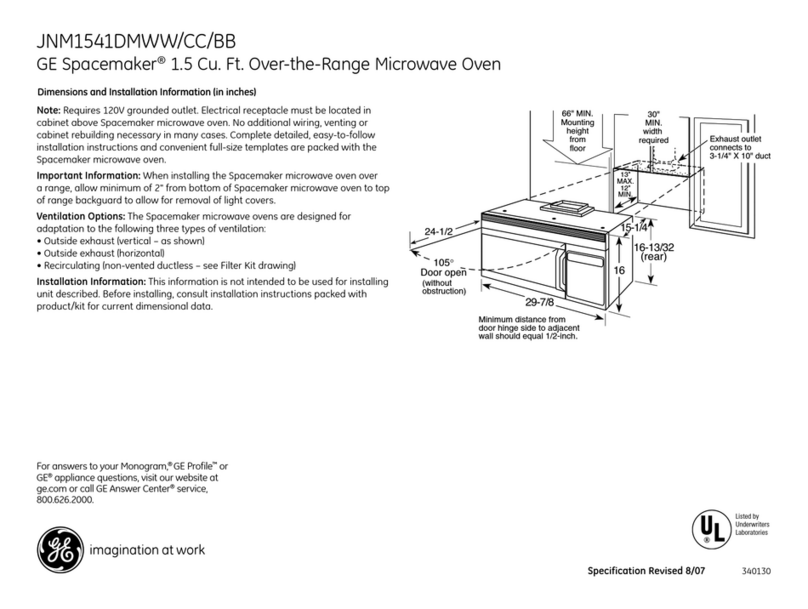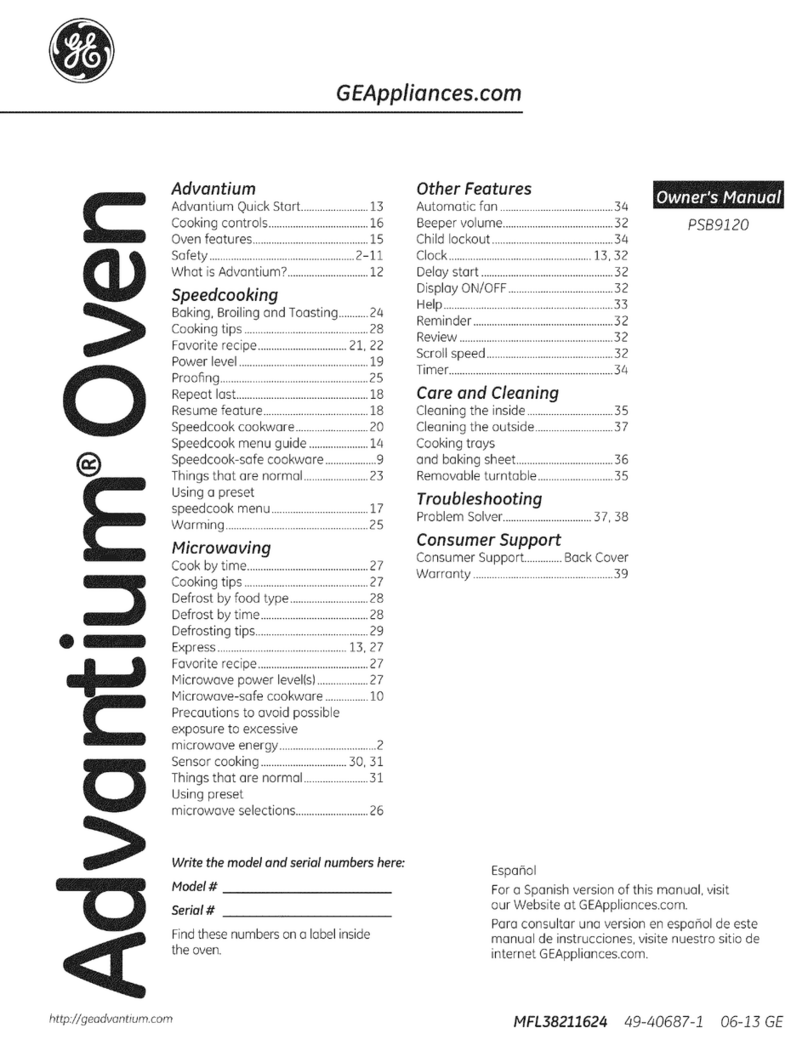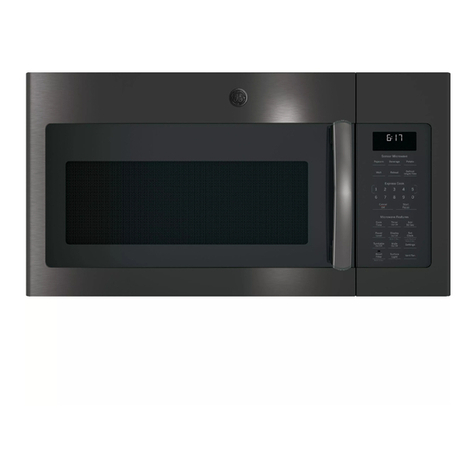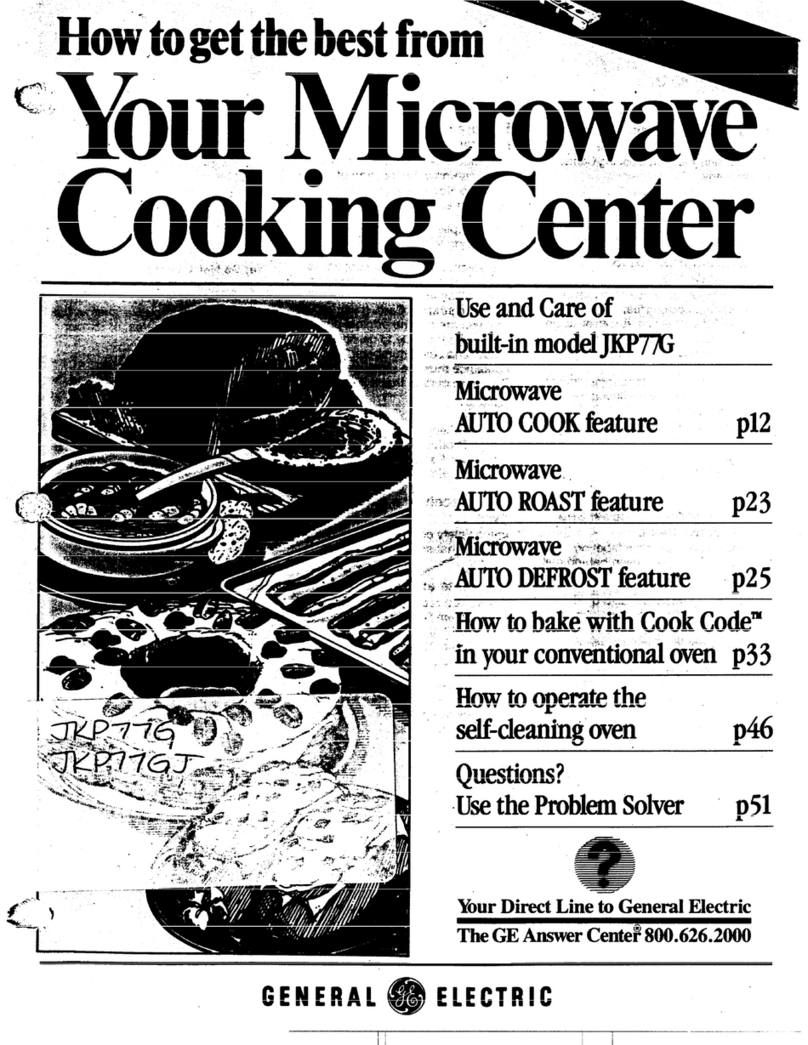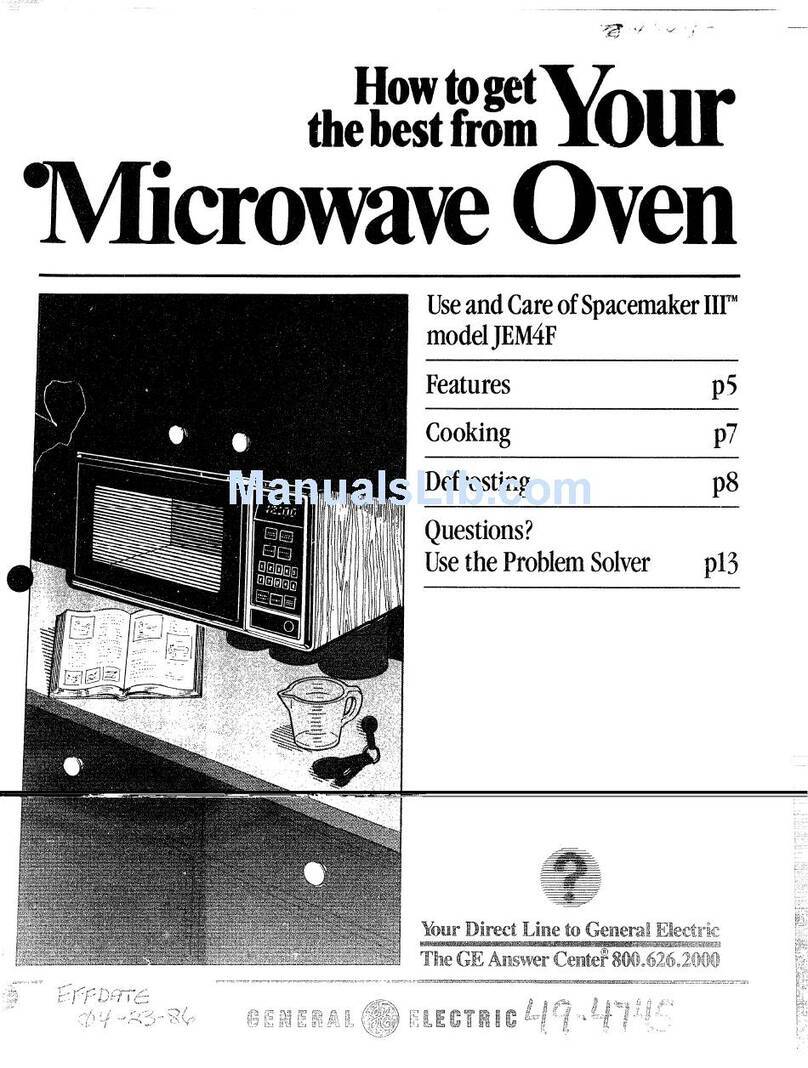Your Touch Control Mnel
The Touch Control Panel
allows you to set the oven controls
electronically with the touch of a
finger. It’s designed to be easy to
use and understand.
1. DISPLAY. Displays time of day,
time counting down during cooking
functions, power level, internal
food temperature, Auto Roast
codes, Auto Defrost codes and food
weights, cooking mode and
instructions.
2.
T~
COOK I &
~.
Microwave
for a preset amount of time using
automatic Power Level 10 (HIGH),
(or change power level after entering
cooking time. See page 13. )
3. MANUAL DEFROST. Gentle
thawing at automatic Power Level 3
(LOW.
of
desired, you may change
power level after entering defrosting
time. See page 12. )
4. POWER LEVEL. Touch this
pad before entering another power
level number if you want to change
from automatic Power Level 10
(HIGH) for cooking or Power
Level 3 (LOW) for defrosting.
5. MIN/SEC TIMER. This
feature uses no microwave energy.
It functions as a kitchen timer, as
a holding period afier defrost or
as a delay timer before time or
temperature cooking. (See page 7.)
6. AUTO ROAST. Insert probe,
touch this pad, and desired number
pad for code to slow-cook or
temperature cook meat with
automatic preset program.
(See page 10.)
7. NUMBER PADS. Touch these
pads to enter cooking/defrosting
time, power level, time of day,
finished food temperature, Auto
Defrost codes and food weights.
8.
AUTO START.
Allows
yOU
to program your oven to begin
cooking at a preset time of
day—
up to an n-hour and 59-minute
delay. (See page 13.)
9. START. After all selections are
made, touch this pad to start oven.
L
10. TEMP COOK/HOLD. Use
the temperature probe to cook by
using a preset temperature. Once
oven reaches preset temperature,
it switches to HOLD setting and
maintains that temperature for up
to an hour or until you touch the
CLEAR/OFF pad. (See page 14.)
U. CLOCK. Touch this pad to
enter time of day or check time
of day while microwaving.
To set clock, first touch CLOCK
pad and then enter time of day.
For example, if time is
1:30,
touch
number pads 1, 3, and O and
1:30
will appear in display. Touch
START pad. To reset or change
time, simply repeat above process.
U.
AUTO DEFROST. Touch this
pad, then code number and food
weight. The oven automatically
sets power levels and defrosting
time. (See pages 8 and 9.)
~.
MINUTE. Use with number
pads to enter whole minutes. For
example, for 4 minutes touch 4 and
MINUTE.
14. CLEAR/OFF. When touched,
it shuts off the oven and erases all
settings (except time of day).
“PRObE”
Appears
On Display:
. Probe has been forgotten when
AUTO ROAST or TEMP COOK/
HOLD function is being used.
c
Probe is not securely seated
in probe receptacle.
Use your Touch Control Panel
to Auto Defrost or Auto Roast with
the oven automatically setting the
times and power levels for you,
Temp CooHHold using your choice
of temperature, Manual Defrost and
Time Cook with choice of power
levels from 1 (lowest) to 10
@ighest),
time kitchen tasks with the Min/Sec
Timer, and set the clock.
Create your own programs to suit
your individual cooking style. For
example: use the Min/Sec Timer to
delay the start of Temp Cook/Hold,
Auto Roast or Time Cook I & II,
or program a hold time between
Manual Defrost and Time Cook I
& II. (See page 7.) Set Time Cook I
&II for a two-stage program using
different times and power levels.
(See page 13.)
6
